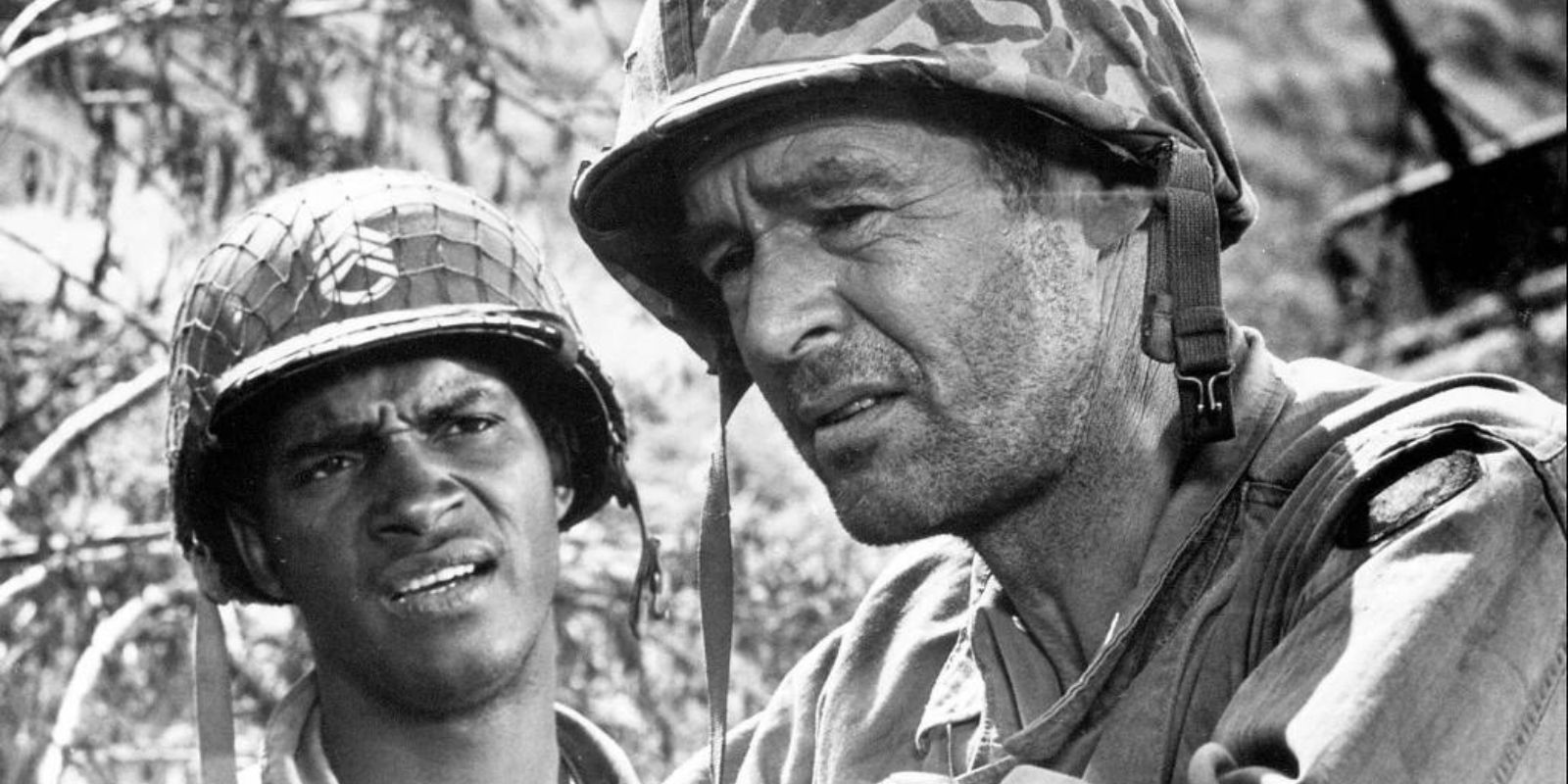While director Anthony Mann is predominantly recognized for his remarkable contributions to the western and noir genres, he also ventured into various other cinematic realms, including impactful war films. One of his standout entries in this less-explored territory is the 1957 masterpiece Men in War. Unlike the grandiose war epics of its time, this film excels in its psychological depth and complexity, delivering a narrative that critiques the essence of warfare. What initially appears to be a straightforward survival story evolves into a gripping psychological exploration of the haunting effects of combat on soldiers, forcing viewers to confront the grim realities faced by those in battle.
Experience the Intensity of ‘Men in War’: A Small-Scale War Epic
Set against the backdrop of the Korean War, Men in War follows the harrowing journey of Lieutenant Benson, portrayed by Robert Ryan, who leads a platoon stranded behind enemy lines. Over the course of a single day, the soldiers face the daunting challenge of navigating back to safety. During their perilous trek, Benson encounters Staff Sergeant Joseph “Montana” Willomet, played by Aldo Ray, who is driving a jeep with a shell-shocked Colonel (Robert Keith) who has lost the ability to speak. As Benson strives to secure a safe passage for his men, Montana is desperately focused on getting his Colonel medical attention. This partnership soon reveals tensions as Montana’s reckless disregard for enemy lives raises questions about their moral compass amidst the chaos of war.
Adapted from Van Van Praag‘s novel Combat, the screenplay for Men in War is penned by Philip Yordan, an Oscar-winning writer known for the acclaimed Western Broken Lance. Historical accounts suggest that Yordan was a front for Ben Maddow, the original screenwriter blacklisted during the McCarthy era, which complicates the film’s legacy. Much like Samuel Fuller‘s earlier Korean War film The Steel Helmet, this production was executed on a modest budget and filmed in California, utilizing the rugged terrain of Malibu Canyon and Thousand Oaks to represent the Asian landscape. The Pentagon’s refusal to cooperate, citing concerns over the film’s portrayal of military officers, adds another layer of intrigue to its production history.
Related
The Western That Broke Up Jimmy Stewart and Anthony Mann?s Working Relationship
Disagreements over the Western sparked a rift between the two, leading to the bitter end of their collaboration.
Mann, celebrated for his film noirs such as Raw Deal and T-Men, renowned for the striking black-and-white cinematography of John Alton, skillfully capitalizes on the limitations of Men in War. He expertly conveys the vastness of the treacherous landscapes that the soldiers must navigate. The tension is palpable as the enemy remains largely hidden within the hills and treetops, leaving the soldiers to grapple with the uncertainty of where the next sniper bullet will originate from or when an explosive will detonate. One particularly memorable sequence unfolds in a jungle filled with landmines, where Benson and Montana cautiously maneuver through a perilous environment, exemplifying the constant danger and psychological strain of war.
Unpacking the Psychological Trauma of Combat in ‘Men in War’
It is intriguing to consider why the Pentagon found Men in War so objectionable, especially given the film’s profound respect for the soldiers who have sacrificed their lives. One possible source of contention could be its portrayal of a US military Colonel grappling with post-traumatic stress disorder, highlighting the long-lasting psychological scars inflicted by warfare. Another contentious character is Montana, whose impulsive actions?shooting first and asking questions later?parallel the morally complex characters often portrayed by Jimmy Stewart in Mann?s celebrated westerns like Winchester ’73, The Naked Spur, and The Man from Laramie. These films challenged the traditional heroic archetypes, delving into darker themes of morality.
When a sniper opens fire on the platoon, Benson advocates for taking the assailant alive for interrogation. However, Montana, shaped by his traumatic experiences, opts to kill the sniper, suspecting a hidden weapon. This moment encapsulates the moral dilemmas faced by soldiers, as Montana’s distrust leads to catastrophic decisions, including the execution of three North Koreans who posed as Americans. In a heart-wrenching turn, Benson recognizes the humanity of a fallen enemy when he discovers a family photograph among the belongings of a slain soldier, reflecting how PTSD manifests in varied and complex ways. The film poignantly illustrates that the path to healing lies in recognizing our shared humanity rather than viewing others solely as foes.
Men in War is currently available for streaming on Roku in the U.S., allowing a new generation of viewers to engage with its powerful themes and historical context.
WATCH ON ROKU









